 What
should a driver be aware of when driving around pedestrians?
What
should a driver be aware of when driving around pedestrians?PROGRAM READING
MODULE 8
| Required amount of time to complete: 40 minutes |
MAN, MACHINE AND ENVIRONMENT
MODULE 8: CRASH PREVENTION
TECHNIQUES (B)
SUBJECT 1: Sharing The Road
There are many users of the roadway systems. To move safely throughout this system, we will have to share the roadway with all of its users.One item we will have to be keenly aware of is that many of the vehicles that we are sharing the road with have different characteristics than the passenger car that most of us commonly drive. For instance, a bicycle is not as fast but is much more maneuverable. A bicycle rider could go from riding on the sidewalk to riding on the roadway at virtually every intersection. We should be prepared to give these vehicles more room. A motorcycle is just as maneuverable as a bicycle but as fast or faster than the car most of us commonly drive in. In both cases, a vehicle framework protects neither driver of a bicycle or motorcycle as we are in our car; extra care should be exercised when these vehicles are around. Both of these vehicles can stop on a dime so we have to increase our following distance behind them. If we are too close and try to stop, we might run them over. Large trucks and buses each pose other hazards by their very large size. You can not readily see around them and because of their large size and weight they have much greater stopping distances than our passenger car. You have to be careful when you pull out in front of them. If you do not give them more room, they may not be able to stop and will run you over. Realizing these differences will make the trip safer for us and those "other" vehicles.
 What
should a driver be aware of when driving around pedestrians?
What
should a driver be aware of when driving around pedestrians?
The driver should be aware that the average person travels at about four feet per second. Traffic lanes are 10, 12, 16 feet, or greater. You should allow time and look for pedestrians who are elderly, handicapped, with their children, or carrying packages of some sort. Pedestrians should be given the right of way in all circumstances. You should be on the lookout for pedestrians that cross at mid-block or against lights. When you make a right turn on red (where it is not prohibited), look for pedestrians crossing the intersecting street with the green light. You are required to yield the right of way to the pedestrian1 in this instance.
When there are no sidewalks, which side of the road should the pedestrian walk on?
When there are no sidewalks, pedestrians should walk on the side of the road facing oncoming traffic. As experience tells us, this is not always done. Consequently, always scan for pedestrians.
Can a bicyclist use the roadways like a motor vehicle?
Under Section 316.2065, Florida Statutes, a bicyclist has all the rights and duties applicable to the driver of any other vehicle. This means that they can use the roadways the same as other vehicles. The driver should be aware of and keep an eye out for bicycle riders. Bicycles must adhere to all the same traffic laws as a motor vehicle yet often fail to do so. Motor vehicle drivers must be willing to share the road and give up the right of way, thus protecting themselves and the rider of the bicycle2.
Tips for Other Drivers about Bicycles:
What should a driver be aware of when driving around motorcycles? Motorcycle riders should be aware of safe lane positioning and ideally be in the left-hand portion of the lane as to provide the best visibility for themselves and other drivers. It is illegal for motorcycles to pass between cars in the middle of traffic lanes or to ride more than two abreast in a lane. Motorcycle riders and other motor vehicle drivers should be aware of the low visibility of motorcycles on the roads. |
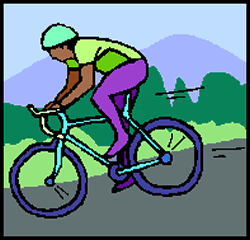 |
Tips for Other Drivers about Motorcycles:
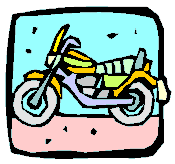 |
|
What should you remember when driving by a larger vehicle (bus, oversized trucks)?
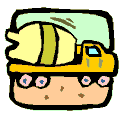 Drivers should be aware of the extra room needed for the execution of
turns by a large vehicle. Attempting to steal the inside track from a large
truck can prove disastrous as the large motor vehicle continues its turn and
drives over the top of your car. Tailgating or failing to judge their speed is
also a dangerous activity. Drivers should keep clear of these vehicles until
their turn is completed. Similarly, drivers of large vehicles should leave their
vehicles sufficient room to complete turning maneuvers and should not
underestimate the amount of room needed to complete the wide turns. Both the
driver of large vehicles and the driver affected by these wide turns should use
caution, reduce speed, and use evasive action when needed to avoid
collisions4.
Drivers should be aware of the extra room needed for the execution of
turns by a large vehicle. Attempting to steal the inside track from a large
truck can prove disastrous as the large motor vehicle continues its turn and
drives over the top of your car. Tailgating or failing to judge their speed is
also a dangerous activity. Drivers should keep clear of these vehicles until
their turn is completed. Similarly, drivers of large vehicles should leave their
vehicles sufficient room to complete turning maneuvers and should not
underestimate the amount of room needed to complete the wide turns. Both the
driver of large vehicles and the driver affected by these wide turns should use
caution, reduce speed, and use evasive action when needed to avoid
collisions4.
RESOURCES:
American Automobile Association, Responsible Driving, Chapters
12, number 1,2, 3, 4.
MAN, MACHINE AND ENVIRONMENT
MODULE 8: CRASH PREVENTION
TECHNIQUES (B)
SUBJECT 2: Passing, Including Necessary Clear Distance
As we drive, there will be situations in which we have to pass another vehicle. To do this safely, there are many things that we need to take into consideration.
What should a driver ask themselves about passing another vehicle?
When attempting to overtake and pass another vehicle, you should ask yourself, "Is this pass necessary, legal and safe?" These are considerations that you should make in every passing situation. If you answer no to any one of them, you should not pass.
Passing on an open roadway should be done with the same caution. The passing maneuver should be prudent and safe for conditions and the driver must have an unobstructed view and the necessary clearance before conducting the pass. No passing to the left shall be done when approaching or upon the crest of a grade, or a curve in the highway where the driver’s view is obstructed within such distance as to create a hazard in the event another vehicle might approach from the opposite direction1.
 When passing a vehicle, what precautions should you use?
When passing a vehicle, what precautions should you use?
Why should you be careful when changing lanes?
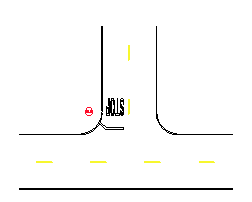 |
Drivers should be aware that excessive lane changing on highways is not advisable, as it increases the chances for mishap or collision. When changing lanes, it is best to use a combination of side mirrors, the rearview mirror, and glances over one’s shoulder to get a full perspective on road conditions and other vehicles that may come into conflict. Drivers should not rely solely on any one of these elements but should use them in conjunction with one another. Drivers should also realize that when changing lanes, extreme caution should be exercised, and the maneuver should be done within a reasonable amount of time. Multiple lane changing is legal as well but must be done individually, not as one large block of lanes to be crossed together2. |
What are the prohibited passing situations?
 A vehicle
shall pass to the left on a highway with opposing traffic as long as the
maneuver does not interfere with the oncoming vehicles and is safe for
conditions. No vehicle shall pass when the view is obstructed within 100 feet of
any bridge, viaduct or tunnel, or when approaching within 100 feet of any
traversing intersection or railroad grade crossing. A vehicle may pass on the
right side if the vehicle to be passed is making or about to make a left turn
upon a highway, within a business or residential district with an unobstructed
pavement of sufficient width for two or more vehicles in the direction of travel
or on a one way street. Drivers should exercise extreme caution when passing on
the right or left and should have an unobstructed view of the lane to which they
will travel. The driver should adjust speed accordingly. A vehicle must be able
to return to the right lane when passing on the left before any approaching
vehicle comes within 200 feet. A vehicle attempting to pass on a highway must
have sufficient space and room before beginning the pass. Excessive speed is
neither allowable by law nor advisable in passing. The driver should only pass
if it can be done within the legal speed limits. You should look over your
shoulder to check your blind spots and should use all mirrors available to you
before starting the pass. The pass must be construed as safe and prudent before
the attempt and must be completed in a reasonable amount of time and
distance3. Additionally, look for and obey no
passing signs and the double yellow lines on the road. The double yellow lines
also mean no passing.
A vehicle
shall pass to the left on a highway with opposing traffic as long as the
maneuver does not interfere with the oncoming vehicles and is safe for
conditions. No vehicle shall pass when the view is obstructed within 100 feet of
any bridge, viaduct or tunnel, or when approaching within 100 feet of any
traversing intersection or railroad grade crossing. A vehicle may pass on the
right side if the vehicle to be passed is making or about to make a left turn
upon a highway, within a business or residential district with an unobstructed
pavement of sufficient width for two or more vehicles in the direction of travel
or on a one way street. Drivers should exercise extreme caution when passing on
the right or left and should have an unobstructed view of the lane to which they
will travel. The driver should adjust speed accordingly. A vehicle must be able
to return to the right lane when passing on the left before any approaching
vehicle comes within 200 feet. A vehicle attempting to pass on a highway must
have sufficient space and room before beginning the pass. Excessive speed is
neither allowable by law nor advisable in passing. The driver should only pass
if it can be done within the legal speed limits. You should look over your
shoulder to check your blind spots and should use all mirrors available to you
before starting the pass. The pass must be construed as safe and prudent before
the attempt and must be completed in a reasonable amount of time and
distance3. Additionally, look for and obey no
passing signs and the double yellow lines on the road. The double yellow lines
also mean no passing.
RESOURCES:
Florida Statutes.
American Automobile Association,
Responsible Driving, Chapters 12, number 1, 2, 3.
MAN, MACHINE AND ENVIRONMENT
MODULE 8: CRASH PREVENTION
TECHNIQUES (B)
SUBJECT 3: Right Of Way
Failure to yield the right of way leads to collisions in all the United States and especially in Florida. These are some ways for you to reduce this probability when you are driving.
Who has the right of way?
The law gives the right-of-way to no one. It only says who must yield (give up) the right-of-way. Every driver, motorcyclist, moped rider, bicyclist and pedestrian must do everything possible to avoid a crash. When you yield the right of way to another vehicle, you are letting them go before you in the traffic situation. For example, you come upon a stop sign at the same time as another driver in a cross street and he is on your right. You yield (give up) the right of way to that driver by letting them go first.
The driver should be aware of the areas in which he drives most frequently and should have a general knowledge of other frequently traveled streets or roadways as well. The driver should not be influenced by friends or peer groups when driving and should make their own decisions in regards to routes, speed, etc. The driver should know which intersections or thoroughfares are more apt to have collisions and should avoid them. The driver should consider how the right-of-way will affect their travel. The driver should use their own discretion as to travel plans and the environment1.
Should you ever insist on the right of way?
The driver should never assume that other drivers will start or complete any maneuver. A driver should never insist on the right of way nor attempt to force their way into traffic. Drivers should try to anticipate other drivers actions as well as yielding whenever needed or required by law. Giving up the right of way to other drivers also helps to avoid collisions, as does gaining eye contact with all operators of motor vehicles that come directly in conflict with you. Drivers should attempt to be both courteous and conscientious toward other drivers2.
Should I be concerned at an intersection?
![]() Drivers should exercise extreme caution when approaching and
proceeding through intersections. Conflicting highways, vehicles making left and
right turns, and opposing signals all increase the collision potential in an
intersection3.
Drivers should exercise extreme caution when approaching and
proceeding through intersections. Conflicting highways, vehicles making left and
right turns, and opposing signals all increase the collision potential in an
intersection3.
A driver approaching a blind intersection shall do so with extreme caution and reduced speed. The driver shall yield the right of way whenever it is not safe or prudent for their vehicle to proceed through the intersection. The driver reaching an intersection at the same time as another vehicle shall yield the right of way to the vehicle traveling on a continuing highway. The driver shall proceed through and towards a blind intersection at a reasonably safe speed4.
When I am making a turn, what should I be concerned about?
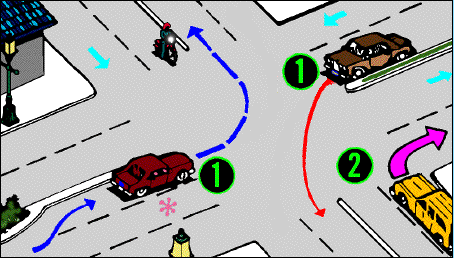
The driver should exercise extreme caution when attempting turning maneuvers from an intersection. Left turns should be made from the further most left hand lane and should be done so only when traffic dictates it is safe and prudent. The driver making the left turn should position himself far enough out into the intersection as to get a clear view of all traffic conditions, while still able to complete the turn in ample time. The driver making the left turn should not have the steering wheel turned in the direction of the turn before beginning the maneuver, as a rear end collision would send the vehicle into oncoming traffic. The left turn should be completed from the left lane to the left lane, unless otherwise dictated by a traffic signal. Right hand turns must be completed into the right hand land or lane closest to the curb. The driver should position the vehicle behind the limit line at first and then ease out into the intersection before completing the turn.
Turns that are executed simultaneously with another vehicle must be done with extra caution, as conflict is bound to exist. Drivers are advised to yield and give up the right of way when traffic dictates and are called on to use good judgment as well. The driver in conflict with another vehicle should yield to the vehicle to his direct right in most cases5.
What should you do if a traffic signal is malfunctioning?
Stop, just as you would for a four-way stop. This means that the first to the intersection proceeds first. The right of way is yielded to the driver on the right. Remember, never insist on the right of way. It is always better to give up the right of way versus getting into a collision.
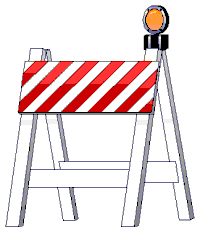
RESOURCES:
American Automobile Association, Responsible Driving,
Chapters 1 and 2, number 1, 2, 3.
American Automobile Association,
Responsible Driving, Chapters 8 and 12, number 4, 5.
MAN, MACHINE AND ENVIRONMENT
MODULE 8: CRASH PREVENTION
TECHNIQUES (B)
SUBJECT 4: Speed Adjustments In Relationship To Surroundings
When traveling, you should adjust your driving speed to take into consideration the surroundings you are driving through. You should be particularly alert in school and construction zones.
How fast should you drive?

You should never drive faster than what is safe for conditions. At all times, motor vehicle operators should drive at speeds where the vehicle is under control and is in conjunction with speed limits and recommendations. Control of speed is an influencing factor in safe operation of a motor vehicle as excessive speed is a major cause of collisions (30%, as discussed earlier). Speed laws should be observed by every motor vehicle operator and are established solely as a safety mechanism for each person using roads or highways. The driver should always observe maximum speed laws on streets, roads, or highways. The basic speed laws states that a driver should operate a motor vehicle at a speed that is cautious, reasonable and prudent at all times. The driver should never operate a vehicle at any speed that is slower than is safe and not block or impede traffic with a slow moving vehicle. The driver operating a vehicle that does not fall under the category of a normal vehicle or with special circumstances or conditions should follow and adhere to special speed limits for designated vehicles1.
What should I be looking for around a construction site?
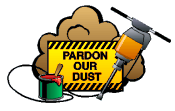 |
Drivers should be alert for individuals and equipment involved in road service, maintenance or construction. Vehicles should slow to a safe speed, proceed with extreme caution and keep alert for maintenance workers or materials. Drivers should follow the directions of the maintenance or construction workers and should also adhere to the restrictions and limitations of any signs that may be posted. Often times the road narrows because of the construction or maintenance, and drivers must be very alert. |
|
Soft shoulders of the road should be avoided. These areas are designated such when the pavement does not extend beyond the paved area. These areas can be comprised of dirt, grass, gravel or other materials. Additionally, the driver should be aware of areas where the pavement is in bad condition. Drivers should avoid roads with potholes, loose gravel and related paving materials. These materials can cause a skid and increase your collision potential. You should avoid drastic maneuvers, excessive lane changing, and reduce your speed when driving on these materials2. What should I be looking for around a school zone or playground? When traveling around playgrounds, parks or schools, drivers should exercise extreme caution and reduce speeds dramatically. Posted speed limits around schools (20 mph or as posted) should be followed. School zones are indicated by regulatory signs with the posted hours of operation and flashing yellow lights advising caution. Careless children or stray toys coming out onto the roadway are unavoidable; however, the driver can be better prepared to deal with these hazards if speed is reduced and caution is used. Aggressively scanning the road and slower speeds give you a better chance to avoid a collision with a child3. |
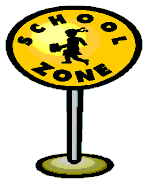 |
What factors should you consider when selecting the speed of your vehicle?
What happens to me if I am convicted of speeding in a school or construction zone?
According to Section 318.18(3)(b-d), Florida Statutes, the fines for speeding in a school zone during the hours of operation are doubled. The exception is if you are up to five mph over the speed limit, the fine is $50. For a construction zone, the fines also double when construction workers are present. You will also have to pay court costs as imposed by the court of not less than $10.
RESOURCES:MAN, MACHINE AND ENVIRONMENT
MODULE 8: CRASH PREVENTION
TECHNIQUES (B)
SUBJECT 5: Railroad Crossings
You might think that getting killed by a train would be fairly hard to accomplish, considering they are loud, noisy and travel on fixed tracks that are clearly marked. Regrettably, from 1995 to the end of calendar year 2001, there have been 101 fatalities at railroad crossings in Florida1.
What should you do at a railroad crossing?
|
Look for a train. Signs warn that you are approaching railroad tracks. Look and listen for trains in both directions. You are not always warned of approaching trains. Intersections without barriers should be approached and crossed with caution. How can I tell how many tracks are at any particular intersection? On the crossbuck or gate there are signs telling you how many tracks there are. |
 |
Why should you stop 15 feet from the tracks?
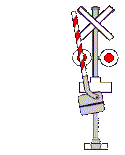 |
What are some of the actions you do not want to do at a railroad crossing?
|
RESOURCES:
DHSMV, Traffic Crash Facts, 2001, Tallahassee, Florida, number
1.
These questions are for practice only. You must only pass the
final exam.
(REMEMBER: You must answer ALL questions
listed below correctly before you can move to the next module)